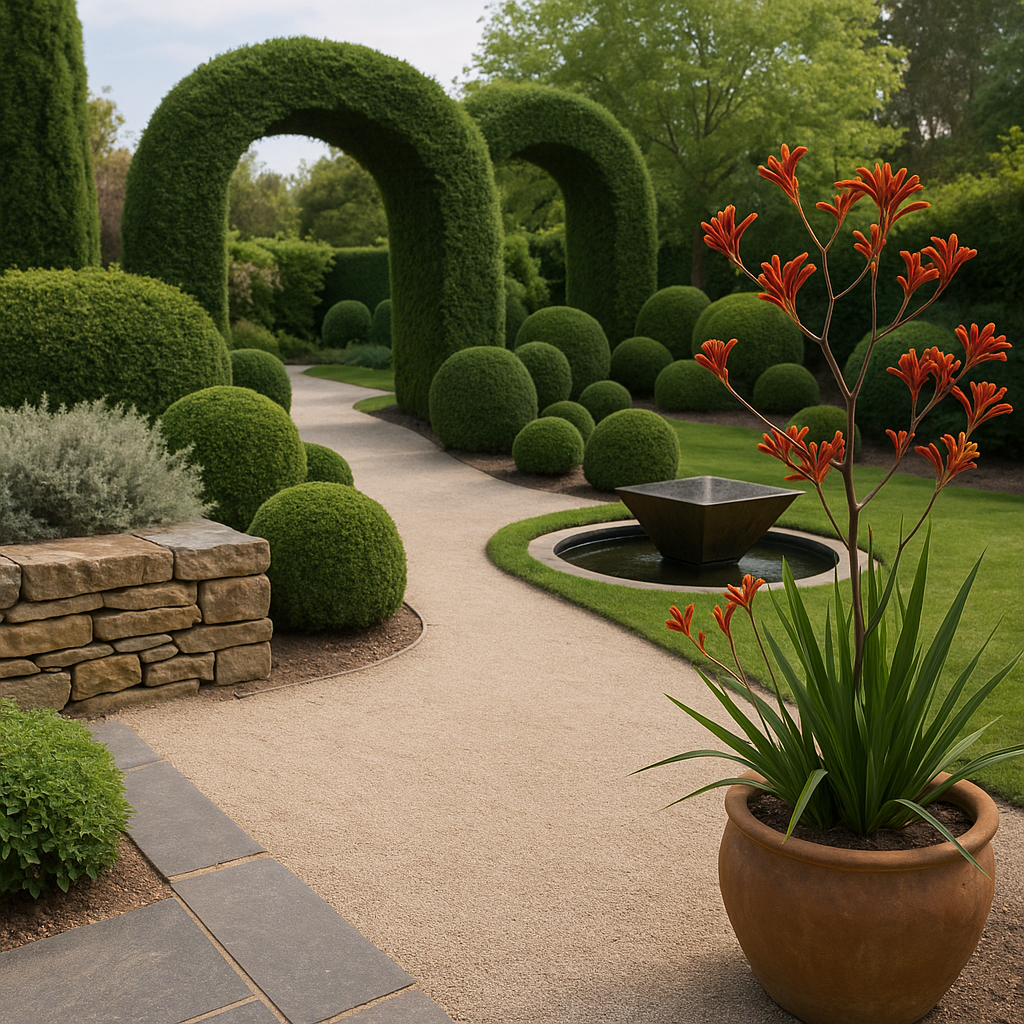To define landscape in the modern era is to go beyond greenery and scenery. It is about shaping outdoor environments that balance beauty, function, sustainability, and human experience. While the term once referred primarily to natural views or artistic depictions of land, today, experts define landscape design as the integration of architecture, ecology, craftsmanship, and cultural expression.
From residential backyards to sprawling corporate campuses and public parks, landscape design continues to evolve. Experts incorporate foundational elements—space, line, form, texture, and colour—while applying design principles such as balance, proportion, rhythm, emphasis, and unity. This combination ensures that landscapes are not only aesthetically captivating but also practical, resilient, and aligned with environmental responsibility.
In this article, we’ll explore how experts define landscape design across disciplines, highlight its creative applications, and examine the role of modern materials and tools—from stone fabrication to energy-efficient glass systems—in shaping the future of outdoor spaces.
Defining Landscape in Modern Terms
To define landscape today is to view it as a dynamic intersection of nature and human intention. A landscape is not merely what you see—it’s how you experience space, interact with it, and connect it to broader environmental and cultural contexts.
Designers and architects define landscape as both a physical composition (plants, hardscapes, water features, structures) and a conceptual framework (movement, balance, emotion, sustainability). A successful landscape is more than decorative; it enhances usability, supports ecosystems, and reflects identity.
Elements of Landscape Design: The Core Ingredients
Space: Organizing the Outdoor Canvas
Space is the foundation when experts define landscape design. It determines flow, usability, and purpose. Whether crafting garden “rooms” or open plazas, designers manipulate both active zones and passive voids to create balance. Negative space, such as lawns or gravel courts, provides visual relief while allowing other features to shine.
Line: Guiding the Experience
Lines direct how people see and move through landscapes. Straight lines suggest order and formality, while curves feel organic and inviting. Designers define landscape lines through paths, hedges, decking patterns, and even plant groupings that lead the eye to focal points.
Form: Adding Structure and Drama
Form refers to three-dimensional shapes—rounded shrubs, tall columnar trees, or geometric patios. By mixing and contrasting forms, designers sculpt rhythm and energy. A wave-pruned hedge, for example, creates a bold, memorable form that elevates ordinary gardens into extraordinary experiences.
Texture: Layering Sensory Appeal
Texture provides visual and tactile richness, from the rough bark of old trees to the smooth polish of crafted stone. In construction, the role of stone fabrication is vital, shaping materials that offer both durability and visual impact for pathways, retaining walls, and decorative features.
Colour: Creating Atmosphere
Colour communicates mood and style instantly. Warm reds and yellows energize, while cooler blues and greens calm. Experts consider not only flowers but also foliage, bark, and seasonal shifts when they define landscape palettes.
Principles of Landscape Design: The Blueprint for Harmony
While elements are the building blocks, principles provide the rules. Professionals apply these to ensure unity across projects:
- Balance: Achieving equilibrium with either symmetrical or asymmetrical arrangements.
- Proportion: Scaling features to human use and spatial context.
- Rhythm: Using repetition of plants, textures, or colours to create flow.
- Emphasis: Highlighting focal points such as sculptures, specimen trees, or water features.
- Unity: Ensuring landscapes connect seamlessly with architecture and surroundings.
Without these principles, even the best elements risk appearing disjointed.
Creative Practices: How Experts Define Landscape Today
Integrating Sustainability
Eco-conscious design is central to modern landscape practices. Initiatives like BrightView Landscape | Smart Gardening & Waste Reduction demonstrate how waste reduction, efficient planting, and sustainable water management are redefining industry standards.
Crafting with Purpose
Creative applications are diverse, from urban rooftop gardens to suburban retreats. Designers balance art with ecology, often drawing inspiration from cultural landscapes and natural systems. For insights into creativity at work, see Designers Define Landscape Elements in Creative Projects.
Reducing Green Waste
Sustainability also involves smart disposal and recycling. Professionals are increasingly guided by frameworks like Bright View Landscape with Green Waste Reduction Tips, which align modern practices with ecological responsibility.
Tools, Materials, and Technology in Landscape Design
The Role of Stone Fabrication
Landscape design often hinges on the permanence and artistry of stone. From patios to retaining walls, stone fabrication ensures custom finishes, strength, and elegance, bridging tradition with innovation.
Glass in Outdoor Projects
Glass is a modern material shaping greenhouses, balustrades, and outdoor enclosures. Safe installation requires specialized tools like the Glass Lifter, enabling precise and efficient handling. Glass structures bring transparency, light, and a contemporary aesthetic into landscape projects.
Energy-Efficient Glass Structures
Sustainable architecture often integrates outdoor and indoor design. Using Insulating Glass Unit Benefits for Energy Savings supports energy efficiency, reducing heating and cooling costs while maintaining comfort—essential in urban and commercial landscapes.
Seeing Landscapes Through a Designer’s Eye
Experts who define landscape design don’t just arrange plants and structures—they craft experiences. They ask questions such as:
- How does negative space enhance balance and scale?
- Which lines guide movement and perception?
- What forms create rhythm and dynamism?
- How can texture and colour evoke the right mood?
- In what ways can the design unify with surrounding architecture and environment?
By answering these questions, designers create spaces that feel intentional, immersive, and timeless.
Conclusion: Defining Landscape for the Future
To define landscape across modern practices is to embrace art, science, and sustainability in equal measure. Experts use the timeless elements—space, line, form, texture, and colour—within guiding principles to create unified, functional, and beautiful spaces.
From the craftsmanship of stone fabrication to the precision of the glass lifter, and from pollinator-friendly gardens to waste reduction strategies, every decision matters. By merging creativity with responsibility, landscape design is poised to deliver spaces that inspire, conserve, and endure for generations.

